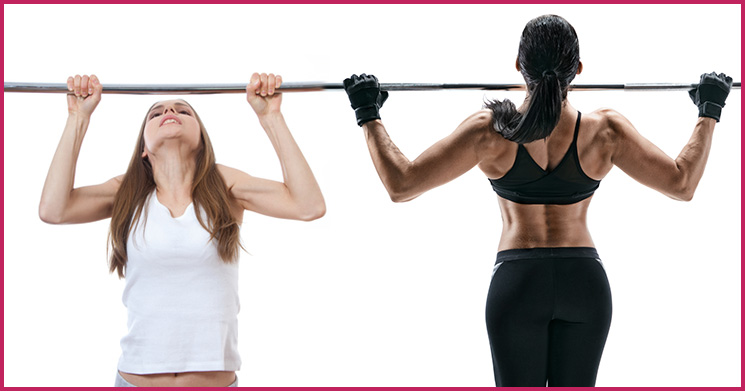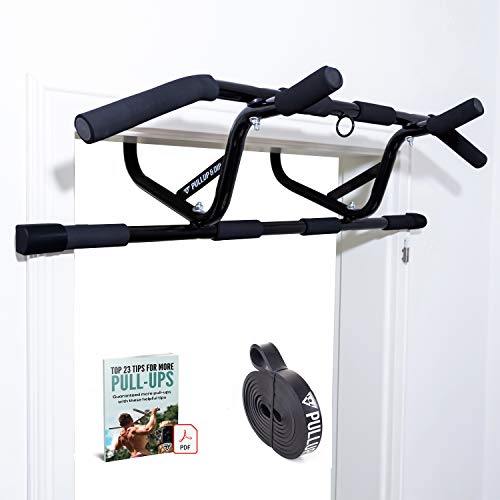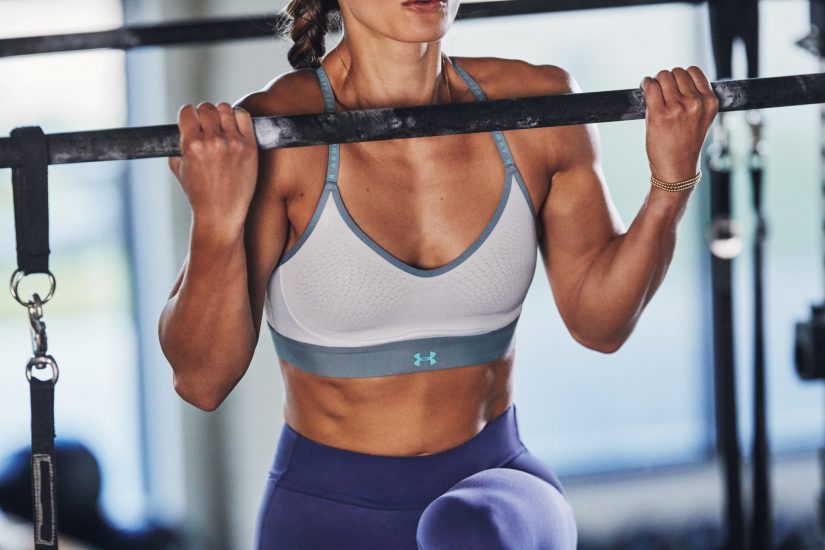Any progress in pull-up training? Every time you hang on the bar do you feel like a wet sack and do you find it incredibly difficult to get up? Then you are very likely doing something wrong! In this article I will show you the 5 most common mistakes in pull-up training that you should absolutely avoid!
chin-up training – therefore you should definitely do chin-ups!
Pull-ups are very effective when it comes to building a wide back . You should therefore be part of every training plan! It is not for nothing that pull-ups, in addition to deadlifts , bench press and squats , are among the basic exercises!
In addition to the back muscles, many other muscles are also trained during pull-up training. For example, the biceps , the neck and the shoulders have to work hard so that you can perform this very demanding muscle exercise properly.
Whether on door edges, on stairs, in playgrounds or even in the forest on stable branches – the practical thing about this muscle exercise is that pull-ups can be performed almost anywhere in between!

These are the 5 most common mistakes in chin-up training
The pull-up is without a doubt a very demanding training exercise. You can only achieve optimal training results if you perform this exercise cleanly and without errors. In the following I will tell you the 5 most common mistakes that you should absolutely avoid!
Mistake no. 1 when doing pull-up training: pull-ups with pulling aids
You should definitely avoid pulling aids during pull-up training. Pulling aids are only intended for exercises with heavy weights. For example se deadlifting or nice werem rowing.
However, if you regularly use pulling aids for classic pull-ups with your own body weight, then the grip strength and also the forearms are not stressed enough. This neglects the muscles in this area and can even cause pain.
TIP: Using pulling aids during pull-up training only makes sense if you are using heavy additional weight. Please do not use this regularly either!
Mistake no. 2 during pull-up training: Increasing the training load too quickly
If you can’t do a pull-up yet, then you should start with a pull-up aid or rack chins . In any case, it is important to learn a clean technique first. If you can already do a few clean repetitions, then you shouldn’t put on additional weights right away.
My recommendation is: Only when you can do at least 8-12 clean repetitions, your body and thus your muscles are strong and stable enough to be able to work with additional weights.

Mistake No. 3 during pull-up training: Unclean technique
Often pull-ups are simply performed incorrectly or improperly. On the one hand, this can lead to injuries and on the other hand the training result is negatively influenced. In order to perform a pull-up properly and properly, the following points should therefore be observed:
- The aim of controlled pulling up should be to pull your chin over the bar .
- When lowering, one repetition is only over when the elbows are fully extended .
- During the repetition, your shoulders should be pulled back . The gaze is always directed forward .
- Pull-ups should always be slow, controlled and without swing , both when pulling up and when lowering.
PRODUCT RECOMMENDATION!
Are you still looking for the right pull-up bar for your home? Here is my favorite:

RECOMMENDATION – Multi-grip pull-up bar PULLUP & DIP
- Professional multi-grip pull-up bar for the door frame
- incl. eyelet for attaching a sling trainer or punching bag
- quick and easy assembly
- very stable steel construction, high quality workmanship
- incl. e-book & pull-up band
Mistake no. 4 during pull-up training: Not lowering deep enough
Actually, this pull-up mistake belongs to point 3 with the unclean technique, but so many exercisers make this mistake that I would like to describe it again here!
If you can do 20 repetitions and more in pull-up training, then you are either very well trained or you go back up at half the distance and thus “cheat”.
A full pull-up repetition is only correctly performed when the chin protrudes over the bar when pulling up and the elbows are fully extended when lowering at the end. Just like this and not otherwise!
If you do pull-ups with this technique, you will be able to achieve significantly fewer repetitions, but you will actually train all muscle fibers.The result: You will become significantly faster Achieve visible success!
Mistake No. 5 when doing pull-up training: Pull-ups are not even part of your training plan
Probably the biggest mistake you can make is that pull-ups are not part of your training plan! As mentioned above, the pull-up is one of the basic exercises , which means that a lot of muscle fibers are trained at the same time .
From my own experience I can confirm that pull-ups together with the deadlift are among the best back exercises . Sure, pull-ups are extremely strenuous, but this effort pays off very quickly with regular pull-up training!
TIP: You can’t do a single pull-up yet? No problem, with this method you can change that quickly!

Tip at the end: wide or narrow – which grip type is the most effective?
A study from 2010 came to the following conclusion: The grip width, i.e. whether you choose a narrow grip or a wide grip for your pull-ups, is complete does not matter and does not play a role in back training. However, it was also found that the broad back muscles are trained better with the underhand grip than with the overhand grip.
Also interesting: The biceps are stressed equally with both the overhand grip and the underhand grip. The type of grip does not matter here either!
If you have the feeling that the biceps are more stressed in the underhand grip than in the overhand grip, this is most likely because you can do more repetitions in the underhand grip and thus use the biceps longer than in the overhand grip!

